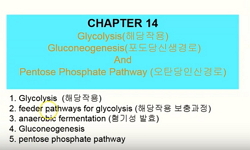Metabolite identification and urinary and biliary excretion of the new fluoroquinolone antibacterial agent DW116 [1-(5-fluoro-2-pyridyl)-6-fluoro-7-(4-methyl-1 -piperazinyl)-1, 4-dihydro-4-oxoquinoline-3-carboxylic acid, hydrochloride] after oral adm...
http://chineseinput.net/에서 pinyin(병음)방식으로 중국어를 변환할 수 있습니다.
변환된 중국어를 복사하여 사용하시면 됩니다.
- 中文 을 입력하시려면 zhongwen을 입력하시고 space를누르시면됩니다.
- 北京 을 입력하시려면 beijing을 입력하시고 space를 누르시면 됩니다.
https://www.riss.kr/link?id=A100878671
- 저자
- 발행기관
- 학술지명
- 권호사항
-
발행연도
1997
-
작성언어
English
- 주제어
-
등재정보
SCIE,SCOPUS,KCI등재
-
자료형태
학술저널
- 발행기관 URL
-
수록면
358-362(5쪽)
- 제공처
-
0
상세조회 -
0
다운로드
부가정보
다국어 초록 (Multilingual Abstract)
Metabolite identification and urinary and biliary excretion of the new fluoroquinolone antibacterial agent DW116 [1-(5-fluoro-2-pyridyl)-6-fluoro-7-(4-methyl-1 -piperazinyl)-1, 4-dihydro-4-oxoquinoline-3-carboxylic acid, hydrochloride] after oral administration have been studied in Sprague-Dawley rats. The excretion kinetics were monoexponential. Most of the drug was eliminated via the hepatic and renal routes. Mean renal clearance of DW116 was 73.4 ml/hr/kg and mean biliary clearance was 83.8 ml/hr/kg. The major metabolite excreted in the bile was identified as the glucuronide ester of the parent drug using base-hydrolysis of the conjugate metabolite followed by co-HPLC with standard compound, $^{19}$ F-NMR and LC-MS methods. The glucuronide conjugate was also found in urine. The mean urinary recoveries of free and total (free plus glucuronide ester) DW116 were $28.6{\pm}2.7% $and $36.4{\pm}1.8%$ of the administered dose and the corresponding biliary recoveries were $14.4{\pm} 5.5%$ and $37.0{\pm}7.6%$, respectively.
동일학술지(권/호) 다른 논문
-
- The Pharmaceutical Society of Korea
- Park, Won-Bong
- 1997
- SCIE,SCOPUS,KCI등재
-
Inhibitory Effects of Plant Extracts on Adjuvant-induced Arthritis
- The Pharmaceutical Society of Korea
- Kim, Sung-Yong
- 1997
- SCIE,SCOPUS,KCI등재
-
Effect of Hepatic Cirrhosis on the Pharmacokinetics of Theophylline in Rats
- The Pharmaceutical Society of Korea
- Nam, Bang-Hyun
- 1997
- SCIE,SCOPUS,KCI등재
-
Clonazepam Release from Core-shell Type Nanoparticles In Vitro
- The Pharmaceutical Society of Korea
- Kim, Hyun-Jung
- 1997
- SCIE,SCOPUS,KCI등재







 ScienceON
ScienceON






